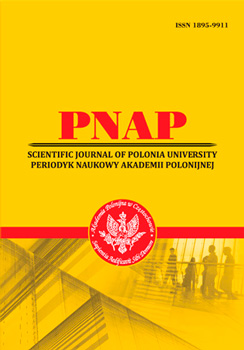CORE CONCEPTS OF MEDIA LITERACY: IMPORTANCE OF MEDIA EDUCATION
Abstract
The aim of this paper is to differentiate the notions “media literacy” and “media education” as the main terms of a contemporary dominated field of research which study mass media and its influence on society. The article reveals different approaches of scholars on media literacy and media education as specific and autonomous field of knowledge in pedagogical theory and practice. It also reflects various definitions of these terms and the way they developed through the rapid evolution of digital technologies and mass media means. Media education is based on the study of five core concepts, which are considered in the article. The authors also review some new trends of media literacy education development, its social and academic importance and rapid growth around the globe. Considering the importance of teaching media literacy in the Ukrainian higher education institutions, the authors give the part of the practical lesson in the discipline “Info-Media Literacy and Critical Thinking” to show how students can reflect on the personal media consumption and footprint.
References
2. Davis J. (1989). Five Important Ideas to Teach Your Kids About TV.” Media & Values, pp. 52-53. Retrieved from: http://www.medialit.org/reading-room/five-important-ideas-teachyour- kids-about-tv (accessed 10 April 2022).
3. Dorr A., Graves S., Phelps E. (1980). Critical TV viewing television literacy for young children. Journal of Communication, vol. 30, no. 3, pp. 71–83.
7. Feilitzen C. (1999). Children and Media: Image, Education, Participation. Göteborg: UNESCO International Clearinghouse on Children and Violence on the Screen. 8. Gerbner G., Gross G. Morgan M. & Signorielli N. (1994). Growing up with Television: the Cultivation Perspective. In J. Bryant & D. Zillman (eds.). Media Effects: Advances in Theory and Research. Hillsdale: Erlbaum, pp. 17–42.
9. Hart A. (2002) Media education in 12 European countries a comparative study of teaching media in mother tongue education in secondary schools. E-Collection of the Swiss Federal Institute of Technology Zurich.
10. Jolls T., Wilson C. (2014) Journal of Media Literacy Education, vol 6, no. 2, pp. 68–78.
11. Kubey R. (1997) Media Literacy in the Information Age. Media Education: Portraits of an Evolving Field. 1st Edition. New York, Poutledge, pp. 1–11.
12. Masterman, L. (1989). Media Awareness Education: Eighteen Basic Principles. Retrieved from: http://medialit.org/reading-room/media-awareness-education-eighteen-basic-principles (accessed 27 April 2022).
13. Thoman E., Jolls T., Share J. (2002). Literacy for The 21st Century: An Overview and Orientation Guide For Media Literacy Education. Los Angeles: Center for Media Literacy.
14. Westlund, O., Bjur, J. (2014). Media life of the young. Young, vol. 22, no. 1, pp. 21–41.
15. UNESCO. (1982). Grünwald Declaration On Media Education. Grünwald, Federal Republic of Germany. Retrieved from: https://www.unesco.org/en/education (accessed 28 April 2022).
16. UNESCO. (2015) Paris Declaration on Media and Information Literacy in the Digital Era. Retrieved from: http://www.unesco.org/new/fileadmin /MULTIMEDIA/HQ/CI/CI/pdf/news/ paris_mil_declaration.pdf (accessed 28 April 2022).
Abstract views: 757 PDF Downloads: 625







